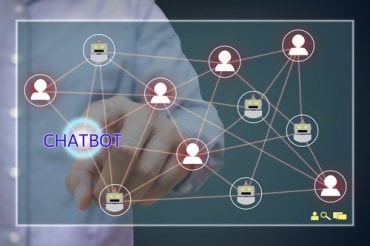
IoT, stream processing, and analytics based on CI and AI allow energy companies to boost efficiencies and better meet customer and regulatory demands.
Utilities, grid operators, transmission companies, and other electric industry entities have long been users of predictive analytics to improve operations, reduce downtime, and maximize revenues. Recently, a perfect storm of conditions is allowing them to take these efforts to a much higher level. The wide-scale use of the Internet of Things (IoT) sensors, stream processing technologies, and supercharged analytics based on continuous intelligence (CI) and artificial intelligence (AI) methods is allowing energy producers and providers to boost efficiencies and better meet customer and regulatory demands.
See also: Energy Sector Realizes Untapped Potential for Real-Time Analytics
In the past, most applications of sophisticated analytics in the energy field have been siloed efforts. For example, a transmission company might develop a maintenance schedule based on the analysis of historical records of transformer outages or a utility might plan power purchases by deriving electricity usage trends from past meter readings. Using predictive analytics, these entities could move to a more proactive approach based on predictive maintenance using real-time IoT data about deployed assets.
In such instances, the entity could determine the likelihood of an event happening in the future. For example, a utility planning restoration services before a major storm might factor in historical information about past outages from similar storms, detailed weather information about the expected path of the current storm, and information about recent vegetation-clearing efforts to determine where damage is most likely to take place. The information can then be used to take preventive actions, such as clearing branches or staging repair crews before the storm.
Other applications of one-off applications abound. For instance, a utility might analyze instantaneous power demands and determines whether to buy more power from a regional grid, tap stored capacity in a battery farm or dam, or offer customers real-time incentives to reduce consumption. Or, a utility might use AI modeling to identify which customers are most likely to fall behind on paying bills and identify which debt relief approach to use on a specific customer or set of customers.
Expanding Application Areas
Increasingly, the abundance of data from IoT devices and the availability of AI for analysis can be used in many more operational areas. Examples include:
Grid operations: Consistently balance distribution-side supply and demand to deliver safe, secure, and reliable electricity service from both traditional and renewable resources.
Customer experience: As expectations and options continue to grow, utilities must create a personal connection with each customer to increase satisfaction, loyalty, and collaboration.
Digital transformation: Streamline operations by enhancing supply chain efficiency and lowering operating costs.
In each of these areas, AI plus IoT data brings benefits. However, to successfully contend with industry disruptions, utilities now must do more. Most have multiple existing analytic point solutions within each domain, including grid operations, maintenance, planning, finance, and supply chain. They need an integrated approach that provides a single source of the truth across domains and systems to simplify the generation of business insights. And they need both out-of-the-box models to accelerate time to value and an open platform to extend solution capabilities to meet individual provider needs.
Driving Factors
Major industry trends are the driver for the use of such solutions. Energy and utility providers face fundamental disruptions to their business models, revenue streams, and regulatory requirements. They need to be agile to survive and thrive. Some of the converging factors that are forcing disruption include:
- Decreasing cost of renewable generation and gas-fueled generation, challenging utilities with the threat of substitution
- The entrance of third-party aggregators into the distribution market
- Regulators moving toward outcome-based rate-making, away from traditional rate-making formulae providing a fixed rate of return on the asset base to investors.
As a result, industry financials are changing dramatically with broad implications across operations, asset management, regulatory, customer engagement, and supply chain processes.
Utilities recognize they must find opportunities for operational improvements using their data. However, while utilities collect huge volumes of data, most of that data is used within a narrow context, often providing only a portion of the required information to decision-makers throughout an organization. The real potential of data in helping utilities to cope with industry changes is rarely realized. At a time when utilities increasingly rely on accurate forecasts to operate efficiently, the underlying assumptions are all changing. Thus, fact-based decisions built from the bottom-up based on all available information are critical to transforming—for investment planning, operations, maintenance, and supply chain processes, among others—in order to maintain reliability, safety, and efficiency as the underlying business model changes.
What’s needed is a platform that can run CI and AI-based analytics across a wide variety of use cases. Key capabilities needed include:
- Out-of-the-box utility industry applications that apply a wide range of analytical capabilities to assess asset health, and risk historically and in real-time
- Cognitive, descriptive, predictive, and prescriptive analytic tools, combined with visualization, IoT data integration, and data lake capabilities to handle the data needs
- An open approach for scalability, customizability, integration of existing utility systems to complement and extend a provider’s legacy information sources.
Unlike siloed solutions of the past, such an approach would integrate and use all relevant available data to assess and forecast asset health across an organization’s entire portfolio to help deal with the forces changing the industry.





